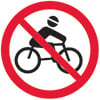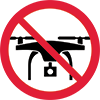May to late October – winter season
You need special skills and preparation to complete the Tongariro Alpine Crossing in winter. There is increased risk from additional hazards – snow, ice, avalanche terrain and sub-zero temperatures.
Alpine weather
The track passes through an alpine environment with changeable weather conditions at all times of year. It is common to experience very cold temperatures, strong wind, heavy rainfall and poor visibility in summer – snow can fall at any time of year.
Check the weather forecast – NIWA website before you go.
Volcanic risk
The Tongariro Alpine Crossing passes through volcanic hazard zones – even when the track is open, volcanic risk is present. Volcanic monitoring systems monitor activity and mitigate volcanic risk, but won't ensure your personal safety. If you are uncomfortable with this risk, choose a different track.
Te Maari, Red Crater and Ngāuruhoe vents have all been active within the last 100 years – the most recent eruption occurred from Te Maari in 2012.
Before you go:
- know the volcanic risks and what to do in an eruption, and
- check volcanic activity information on the Geonet website.
Geothermal hazards
There is geothermal activity around the Tongariro Alpine Crossing – especially near emerald lakes. Steam vents (fumaroles) should not be approached – steam is very hot, the ground can be unstable and severe burns are possible. Stay on the marked track at all times to avoid injury.
Hazardous weather
There are no hazardous weather advisories issued from May to October, so you will need to read the forecast carefully and consider whether you have the skills, experience and equipment for the conditions.
During the summer hiking season, a ‘Not Recommended Today’ advisory is applied to the Tongariro Alpine Crossing when the weather is potentially hazardous.
The advisory is applied if any of the following parameters are exceeded on any two hours between 9 am and 5 pm on the NIWA Tongariro Alpine Crossing (Red Crater) weather forecast:
- average wind speed of 55 kph or greater
- wind gusts of 70 kph or greater
- wind chill of minus 10 °C or colder
- wind chill of 0 °C or colder with 1 mm of precipitation or greater
- rain rate greater or equal to 2.5 mm/hr
- snow rate greater or equal to 0.1 cm/hr
and/or:
- precipitation of 10 mm or greater as a six-hour accumulation between 9 am and 5 pm.
The assessment to apply the advisory will be made at 6 am every day. If applied:
- signage is placed at Mangatepōpō Road end
- an alert is automatically placed on the weather forecast – NIWA website
- transport and guiding operators, isites and visitor centres will be advised automatically via email.
Amenities
Toilets are every 1–2 hr along the track.
Tongariro – a World Hertiage site for its cultural values
The Tongariro Alpine Crossing winds through mountains sacred to Ngāti Hikairo ki Tongariro of Ngāti Tūwharetoa. Every step is an opportunity to connect with the essence of the land and ultimately contribute towards its care. Honour the requests of Ngāti Hikairo by staying safe and respecting their home.
Booking system
You need a track booking for shuttle and guided walk services. Bookings are recommended for all visitors using any part of the Tongariro Alpine Crossing track.
Book to use any part of the Tongariro Alpine Crossing.
Read about why a booking is recommended and sustainable visitor management for Tongariro.
School groups
School groups are encouraged to use the booking system. Those requiring further assistance with trip planning are encouraged to contact the Tongariro National Park Visitor Centre.

No mountain biking
Mountain biking is not allowed on this track.
 No drones
No drones
Unauthorised use of drones is prohibited. You must have a permit to fly a drone.
DOC does not generally approve permits to fly drones in this national park and we do not recommend you apply for one.